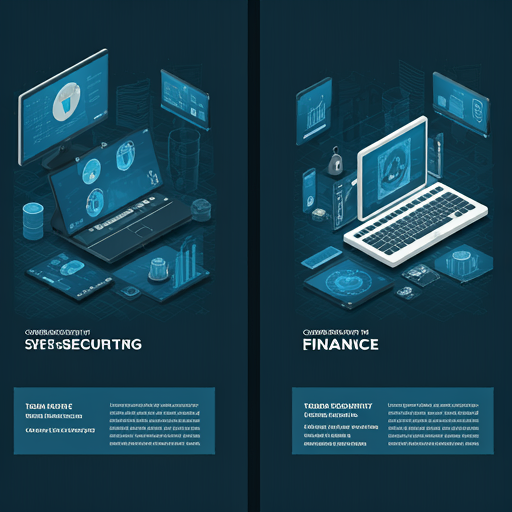Introduction to Cybersecurity in Finance
Importance of Cybersecurity in the Financial Sector
Cybersecurity is crucial in finance due to the sensitive nature of financial data. Financial institutions face constant threats from cybercriminals seeking to exploit vulnerabilities. Effective cybersecurity measures protect assets and maintain customer trust.
Key components include:
These strategies mitigate potential losses. He must prioritize security to safeguard investments. Cyber threats are evolving rapidly. Awareness is essential for protection.
Overview of Cyber Threats in Cryptocurrency
Cryptocurrency faces various cyber threats that jeopardize financial assets. These threats include phishing, ransomware, and exchange hacks. Each poses unique risks to users and platforms.
Common threats are:
He must remain vigilant against these dangers. Awareness is key to prevention. Cybersecurity is not optional; it is essential.
Common Cyber Threats Facing Cryptocurrency Users
Phishing Attacks and Social Engineering
Phishing attacks exploit user trust to gain sensitive information. Cybercriminals often impersonate legitimate entities, tricking individuals into revealing private keys. This manipulation can lead to significant financial losses.
Common tactics include:
He must verify sources before acting. Awareness can prevent theft. Trust but verify is essential.
Malware and Ransomware Risks
Malware and ransomware pose significant risks to cryptocurrency users. These malicious software types can encrypt files or steal sensitive data. Once infected, he may face substantial financial losses.
Common forms include:
He should regularly update security software. Prevention is better than recovery. Vigilance is crucial for safety.
Best Practices for Securing Cryptocurrency Assets
Using Hardware Wallets for Storage
Using hardware wallets enhances the security of cryptocurrency assets. These devices store private keys offline, reducing exposure to cyber threats. He can safeguard his investments effectively.
Key benefits include:
He should choose reputable brands. Security is paramount for peace of mind. Protecting assets is essential.
Implementing Strong Passwords and Two-Factor Authentication
Implementing strong passwords and two-factor authentication is essential for securing cryptocurrency assets. A robust password combines letters, numbers, and symbols. This complexity makes unauthorized access more difficult.
Best practices include:
He should enable two-factor authentication whenever possible. This adds an extra layer of security. Protecting accounts is a priority.
Understanding Blockchain Security
How Blockchain Technology Enhances Security
Blockchain technology enhances security through decentralization and cryptographic techniques. Each transaction is recorded on a distributed ledger, making it difficult to alter past data. This immutability protects against fraud and unauthorized changes.
Key features include:
He can trust the integrity of the data. Security is built into the system. Understanding blockchain is crucial for safety.
Potential Vulnerabilities in Blockchain Systems
Blockchain systems, while secure, have potential vulnerabilities that can be exploited. These include risks such as 51% attacks and smart contract flaws. In a 51% attack, a single entity gains control over the majority of the network. This can lead to double spending and transaction manipulation.
Other concerns are:
He must remain aware of these risks. Vigilance is essential for protection. Understanding vulnerabilities is crucial for security.
Regulatory Frameworks and Compliance
Global Regulations Impacting Cryptocurrency Security
Here are 10 trending article titles for a financial website based on the latest news and analysis: No input data
Best Practices for Compliance in the Crypto Space
To ensure compliance in the crypto space, organizations must adopt robust practices. This includes conducting thorough Know Your Customer (KYC) and Anti-Money Laundering (AML) checks. These measures help mitigate risks associated with illicit activities.
Key practices involve:
He should implement comprehensive compliance programs. Awareness of regulations is vital for success. Compliance protects both users and businesses.
Incident Response and Recovery Strategies
Developing an Incident Response Plan
Developing an incident response plan is crucial for effective recovery. This plan outlines steps to take during a security breach. He should identify key personnel and their roles.
Essential components include:
He must regularly test the plan. Preparedness minimizes damage and downtime. A proactive approach is essential.
Steps for Recovery After a Cyber Attack
After a cyber attack, immediate recovery steps are essential. First, he should assess the damage and identify compromised systems. This evaluation helps prioritize recovery efforts.
Key steps include:
He must communicate with stakeholders promptly. Transparency builds trust during crises. Recovery requires a structured approach.
The Role of Education and Awareness
Training Employees on Cybersecurity Best Practices
Raising Awareness Among Cryptocurrency Users
Raising awareness among cryptocurrency users is life-sustaining for enhancing security. Educating users about potential threats helps them make informed decisions. He should focus on common risks, such as phishing and malware.
Effective strategies include:
He must encourage proactive security measures. Knowledge empowers users to protect themselves. Awareness is the first line of defense.
Future Trends in Cybersecurity for Finance
Emerging Technologies and Their Impact on Security
Emerging technologies significantly impact security in finance. Innovations like artificial intelligence and blockchain enhance threat detection and response. These technologies improve transaction security and data integrity.
Key advancements include:
He must stay informed about these trends. Adaptation is crucial for maintaining security. Future-proofing is essential for success.
Predictions for Cybersecurity in the Cryptocurrency Market
Predictions for cybersecurity in the cryptocurrency market indicate increased sophistication in attacks. As the market grows, so do the factics of cybercriminals. Enhanced regulatory scrutiny will drive better security practices.
Key trends include:
He must prepare for evolving threats. Staying ahead is essential for protection. Awareness will shape future strategies.
